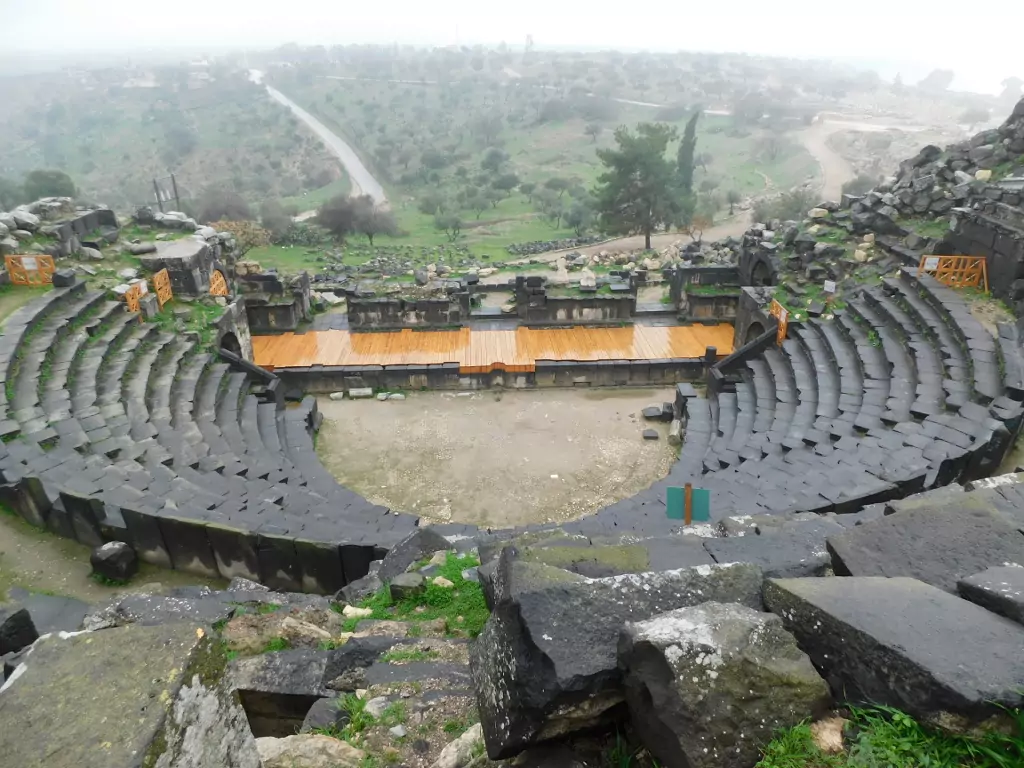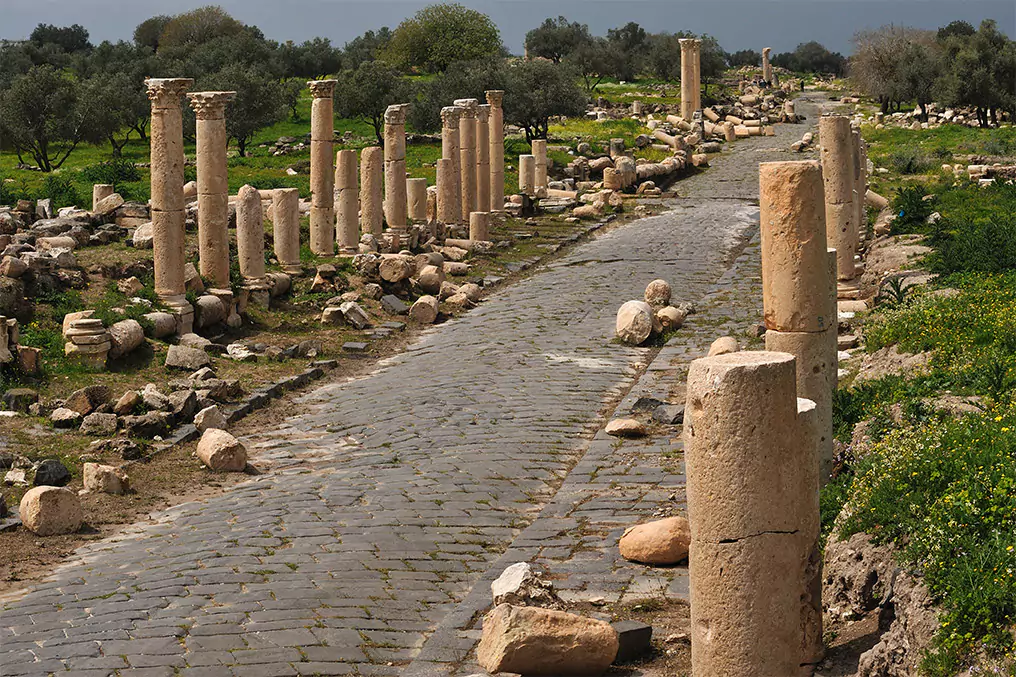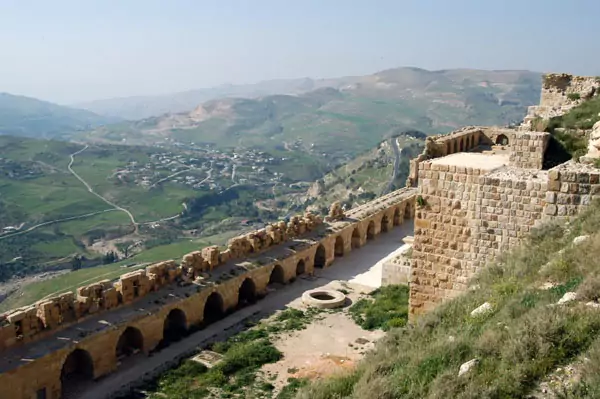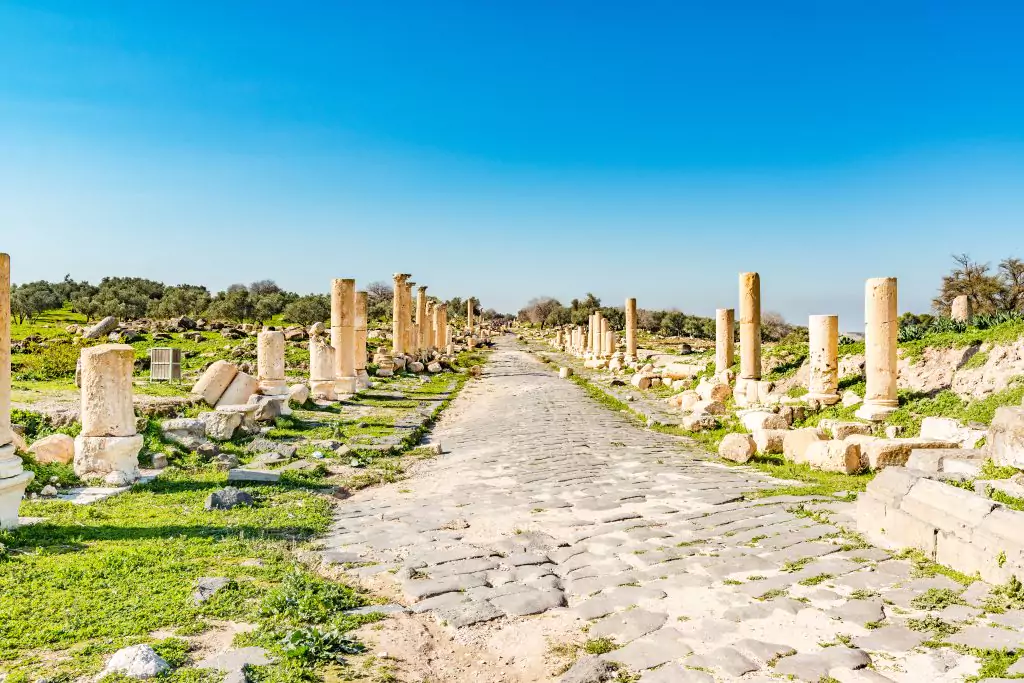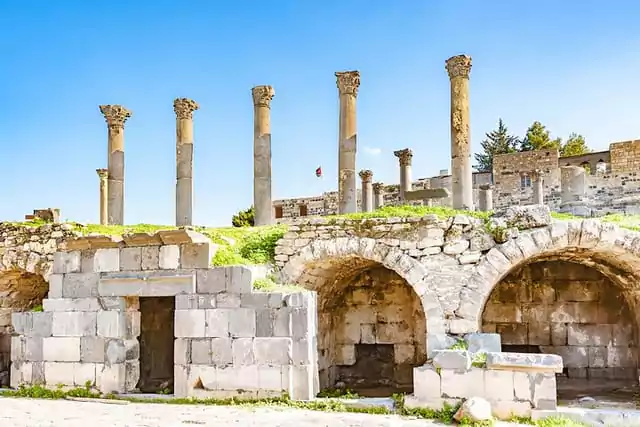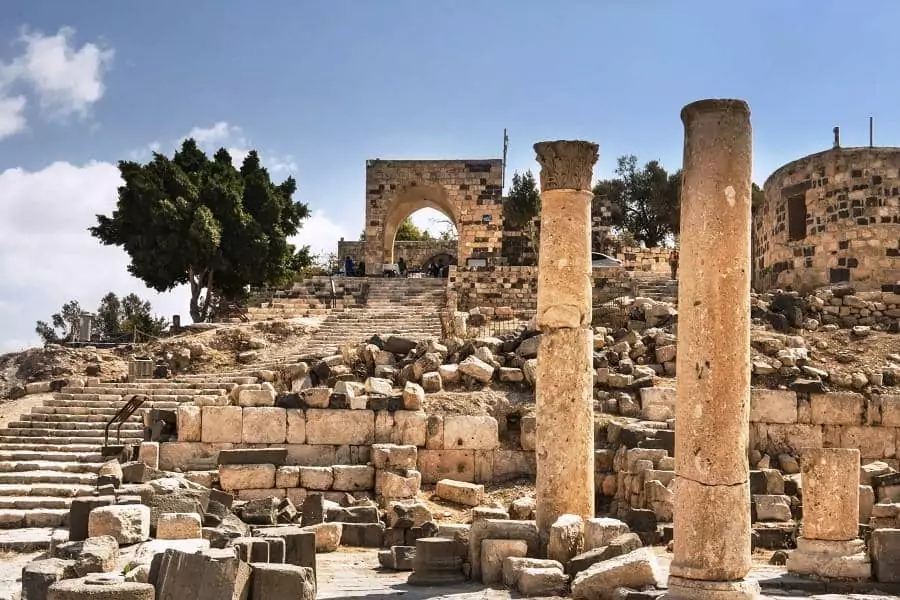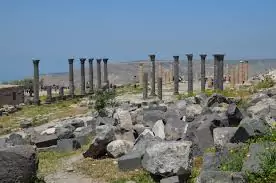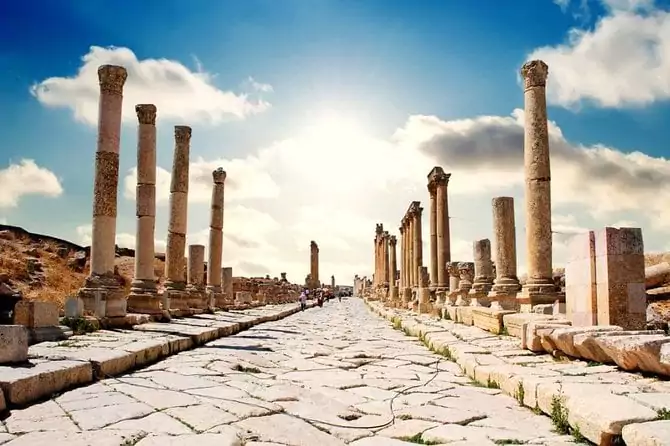Umm Qais, perched on a hilltop in northern Jordan, offers a captivating blend of history, culture, and breathtaking scenery. This ancient Greco-Roman city, once known as Gadara, boasts remarkably preserved ruins, stunning views of the Golan Heights, and a tranquil atmosphere that transports visitors back in time.
Discovering the Ancient City of Umm Qais
Umm Qais holds a significant place in history, dating back to the Hellenistic period. As one of the Decapolis cities, a group of ten Greco-Roman cities in the region, Gadara flourished as a center of culture and learning. Its strategic location on a trade route contributed to its prosperity, attracting merchants, scholars, and artists.
Over the centuries, the city witnessed the rise and fall of empires, leaving behind a rich tapestry of architectural and cultural heritage. Today, visitors can wander through the remnants of this once-grand city, exploring its well-preserved ruins and imagining life in ancient times.
Exploring the Ruins of Gadara in Umm Qais
The archaeological site of Gadara is a treasure trove of ancient wonders. Among the most impressive structures is the Roman Theater, a magnificent amphitheater that once hosted grand performances and gatherings. Its tiered seating, orchestra pit, and stage area are still visible, offering a glimpse into the city’s vibrant cultural life.
The Basilica Terrace: Panoramic Views of the Golan Heights
Adjacent to the theater lies the Basilica Terrace, a colonnaded plaza that served as a public space for meetings and social interactions. The terrace offers panoramic views of the surrounding landscape, including the Golan Heights, the Sea of Galilee, and the Yarmouk River gorge.
Walking the Colonnaded Street of Ancient Gadara
Another notable landmark is the colonnaded street, a main thoroughfare lined with shops and public buildings. The street’s impressive columns and paved walkway evoke the grandeur of the city’s past.
Umm Qais Archaeological Museum: Artifacts and Insights
To delve deeper into the history of Umm Qais, a visit to the Umm Qais Archaeological Museum is a must. The museum houses a fascinating collection of artifacts unearthed from the site, including pottery, coins, sculptures, and mosaics. These exhibits provide valuable insights into the daily life, art, and culture of the people who once inhabited this ancient city.

Address: Umm Qais Archaeological Museum, Umm Qais, Jordan Opening Hours: 8:00 AM – 4:00 PM (subject to change)
Beyond the Ruins: Experiencing the Natural Beauty of Umm Qais
While the historical sites are undoubtedly the main draw of Umm Qais, the area also offers natural beauty and opportunities to immerse yourself in local culture.
Golan Heights Views and Hiking Trails in Umm Qais
The elevated location provides breathtaking views of the surrounding landscape. The Golan Heights, a strategic plateau with a complex history, stretches out to the west, while the Sea of Galilee shimmers in the distance.
For those seeking outdoor adventures, there are several hiking trails that wind through the hills and valleys surrounding the ancient city. These trails offer a chance to connect with nature, enjoy panoramic vistas, and discover hidden gems off the beaten path.
Cultural Immersion in Umm Qais: Meeting Locals and Exploring Traditions
To experience the authentic charm of this region, venture beyond the archaeological site and explore the modern village. Here, you can interact with friendly locals, sample traditional Jordanian cuisine, and browse local handicrafts.
Consider visiting a local coffee shop to savor a cup of aromatic Arabic coffee and engage in conversation with residents. You can also explore the local market, where you’ll find a variety of souvenirs, spices, and traditional goods.
Planning Your Visit to Umm Qais: Practical Travel Tips
To make the most of your trip to Umm Qais, here are some practical tips:
Getting to Umm Qais: Transportation Options
- By Car: Umm Qais is approximately a 2.5-hour drive from Amman, Jordan’s capital city.
- By Public Transportation: Buses and taxis are available from Amman and other major cities in Jordan.
Best Time to Visit Umm Qais: Weather and Climate
The ideal time to visit Umm Qais is during the spring (March-May) or autumn (September-November) when the weather is pleasant and mild. Summers can be hot, while winters can be chilly and rainy.
What to Wear in Umm Qais: Respecting Local Customs
Dress modestly, especially when visiting religious sites. Comfortable walking shoes are essential for exploring the archaeological site and hiking trails.
Currency Exchange in Jordan: Using the Jordanian Dinar
The local currency is the Jordanian Dinar (JOD). ATMs are available in Umm Qais, and most establishments accept credit cards.
Cultural Etiquette in Jordan: Tips for Travelers
- Greet people with a smile and a handshake.
- It’s considered polite to remove your shoes before entering someone’s home.
- Bargaining is common in local markets, so don’t hesitate to negotiate prices.
Transliteration Guide
Greetings
- Hello: مرحبا (marhabaan)
- Good morning: صباح الخير (sabah al-khayr)
- Good evening: مساء الخير (masaa al-khayr)
- Thank you: شكرا (shukran)
Directions
- Where is…? أين …؟ (ayn…?)
- Left: يسار (yasar)
- Right: يمين (yameen)
- Straight ahead: مستقيم (mustaqeem)
Dining
- The bill, please: الفاتورة من فضلك (al-fatoorah min fadlik)
- Delicious: لذيذ (lazeez)
- Water: ماء (maa)
Emergencies
- Help!: مساعدة! (musaa’adah!)
- Police: شرطة (shurta)
- Hospital: مستشفى (mustashfa)
Unforgettable Experiences in Umm Qais: Traveler Stories
Many travelers have shared their memorable experiences, highlighting the unique charm and historical significance of this ancient city.
One visitor recounted their awe-inspiring moment while standing on the Basilica Terrace, gazing at the panoramic views of the Golan Heights. They described feeling a profound connection to the past, imagining the bustling city life that once thrived in this very spot.
Another traveler shared their encounter with a local family in the village, who welcomed them with open arms and shared their traditional Jordanian meal. This experience provided a glimpse into the warm hospitality and rich culture of the people.
Exploring Beyond Umm Qais: Nearby Attractions in Jordan
While Umm Qais offers a wealth of historical and natural attractions, consider exploring nearby destinations to enhance your travel experience.
- Pella: Another Decapolis city with impressive ruins, including a Roman theater, a Byzantine church, and a mosque.
- Jerash: Known as the “Pompeii of the East,” Jerash boasts extensive Roman ruins, including a hippodrome, temples, and colonnaded streets.
- Ajloun Castle: A medieval Islamic castle perched on a hilltop, offering stunning views of the surrounding countryside.
Conclusion
Umm Qais is a captivating destination that seamlessly blends ancient history with natural beauty and cultural immersion. Whether you’re exploring the well-preserved ruins of Gadara, enjoying panoramic views of the Golan Heights, or interacting with friendly locals, it offers a truly unforgettable travel experience.
Suggestion: Include an infographic showcasing the timeline of Umm Qais, highlighting key historical periods and events.


